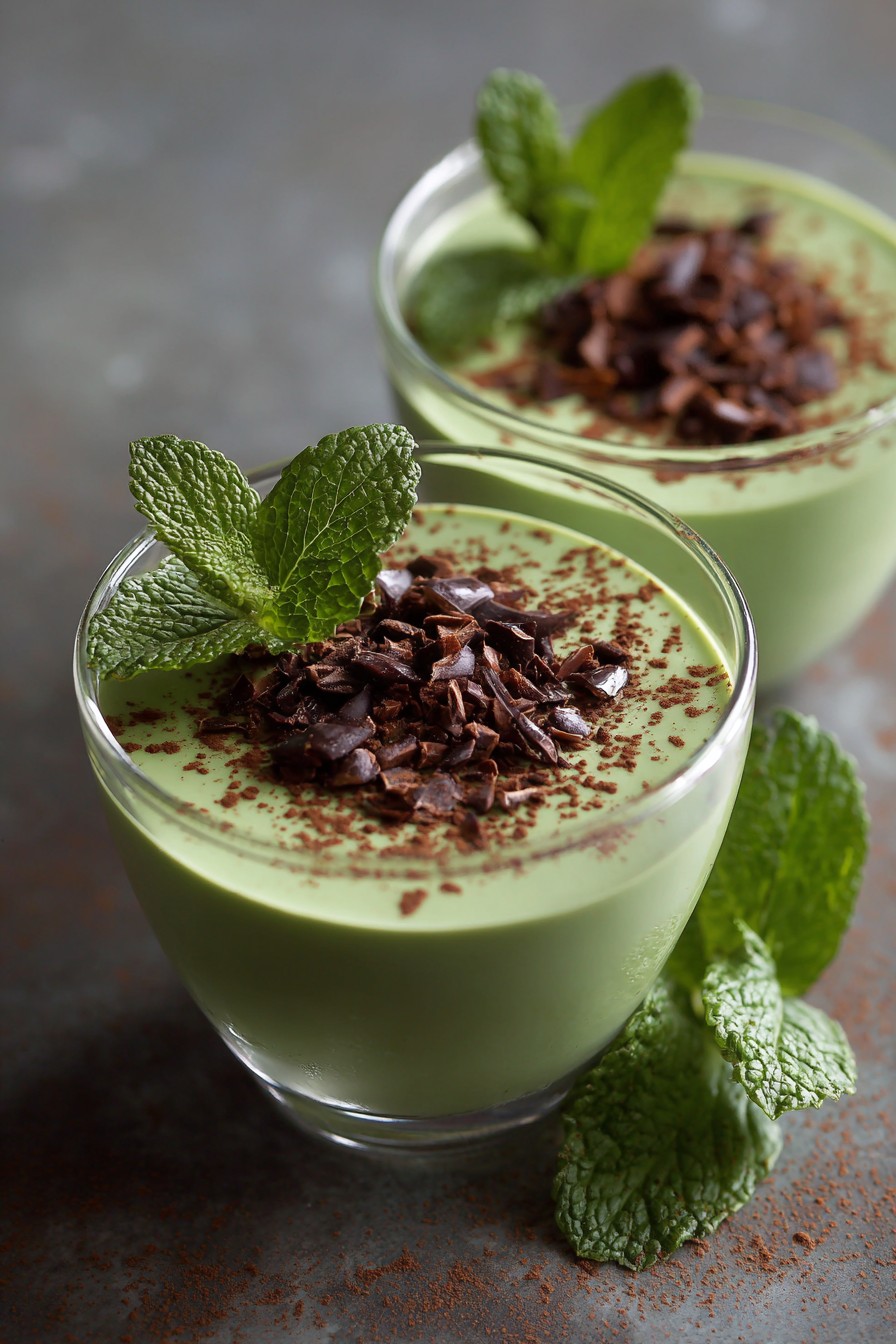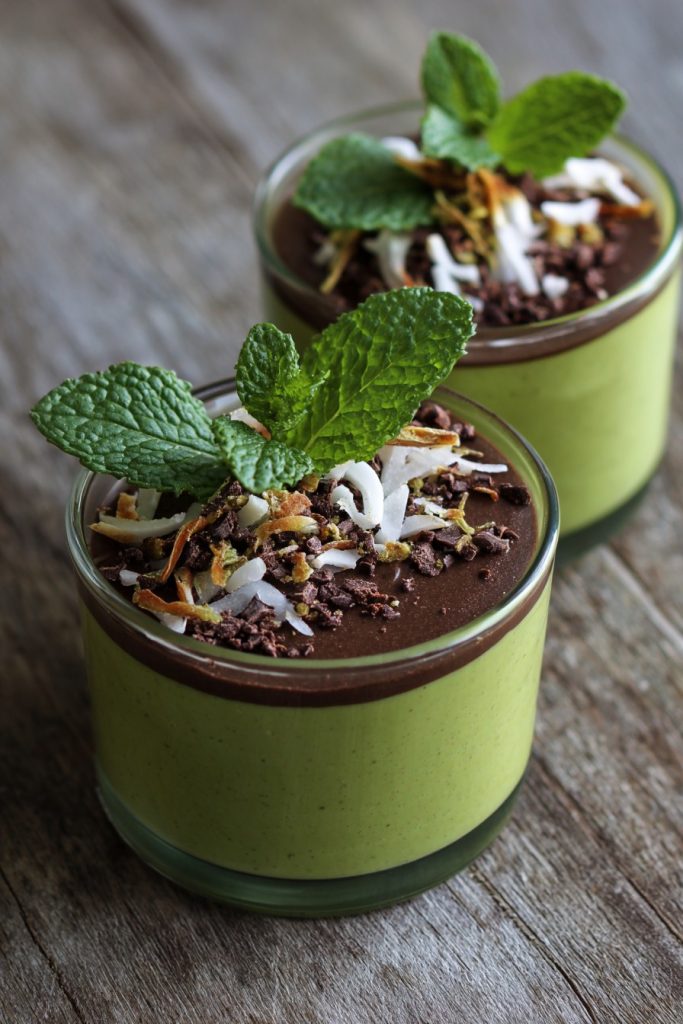Unlocking the potential of avocado beyond savory applications, this sophisticated dessert transforms the humble fruit into an ethereal pudding that rivals traditional dairy-based custards. Utilizing the natural creaminess of perfectly ripe avocados creates a luxurious texture while providing a nutrient-dense foundation for this plant-based indulgence.
Why This Recipe Works
- The emulsion created by blending ripe avocados with high-quality maple syrup and coconut milk produces an exceptionally smooth mouthfeel that mimics traditional pastry cream without dairy components
- Strategic acidulation with fresh lime juice not only prevents enzymatic browning but also brightens the rich avocado flavor, creating a balanced profile that avoids the cloying sweetness common in vegan desserts
- Incorporating premium Dutch-process cocoa powder provides deep chocolate notes that complement the subtle grassy undertones of avocado while masking any potential bitterness from underripe fruit
- The precise chilling protocol allows the pectin naturally present in avocados to set the pudding to optimal consistency, eliminating the need for artificial thickeners or stabilizers
- Vanilla bean paste introduces complex floral aromatics that elevate the simple ingredient list to restaurant-quality dessert status
Ingredients
- 3 large ripe Hass avocados (approximately 1.5 pounds total weight), peeled and pitted
- 1/2 cup pure maple syrup, grade A amber
- 1/3 cup unsweetened cocoa powder, Dutch-process preferred
- 1/4 cup full-fat coconut milk, well-shaken
- 3 tablespoons fresh lime juice, strained
- 2 teaspoons vanilla bean paste
- 1/4 teaspoon fine sea salt
- Optional garnish: toasted coconut flakes, cacao nibs, fresh mint sprigs
Equipment Needed
- High-speed blender or food processor
- Rubber spatula
- Digital kitchen scale
- Fine-mesh strainer
- Ramekins or serving glasses (4-6 ounce capacity)
- Plastic wrap or airtight containers
Instructions

Prepare the Avocado Base
Begin by selecting Hass avocados that yield gently to palm pressure without leaving indentations, indicating perfect ripeness. Halve each avocado lengthwise around the pit, twist to separate halves, and carefully remove pits using a chef’s knife technique. Scoop the vibrant green flesh into your blender carafe, discarding any brown spots or stringy fibers. Weigh the avocado flesh to ensure you have precisely 1.5 pounds for consistent results. The natural oils in perfectly ripe avocados will emulsify beautifully with the liquid ingredients, creating the foundation for our silken pudding texture. Pro tip: Reserve one avocado pit and place it in the finished pudding during chilling—this traditional method helps prevent oxidation and maintains the bright green color.
Combine Wet Ingredients
Incorporate Dry Components
Sift the cocoa powder through a fine-mesh strainer directly into the blending mixture to eliminate any lumps and ensure smooth incorporation. Add the vanilla bean paste and sea salt at this stage, positioning them near the blender blades for even distribution. The vanilla’s alcohol content helps extract flavor compounds from the cocoa while the salt enhances sweetness perception. Blend on high speed for 45-60 seconds, scraping down the sides with a rubber spatula halfway through. The mixture should become completely smooth and glossy, with no visible avocado particles. The final consistency should resemble thick cake batter—if it appears too thick, add coconut milk one tablespoon at a time until proper consistency is achieved.
Achieve Perfect Emulsion
Continue blending at high speed for an additional 90 seconds to fully develop the emulsion. The friction from prolonged blending heats the mixture slightly, helping the cocoa powder bloom and release its full flavor potential. Listen for the sound change—when the motor pitch becomes consistent and smooth, the emulsion has reached optimal stability. The pudding base should coat the back of a spoon thickly without dripping immediately. For professional results, pass the mixture through a fine-mesh strainer into a clean bowl to remove any remaining fibrous bits, though this step is optional if using a high-powered blender.
Portion and Chill
Divide the pudding evenly among four to six 4-ounce ramekins or serving glasses, tapping each container gently on the counter to remove air pockets. Smooth the surfaces with an offset spatula or the back of a spoon for professional presentation. Cover each portion directly with plastic wrap, pressing the wrap directly onto the pudding surface to prevent skin formation. Chill for minimum 4 hours at 38°F—this extended refrigeration allows the pectin in avocados to fully hydrate and set the pudding to proper spoonable consistency. Pro tip: For accelerated chilling, place ramekins in the freezer for 45 minutes before transferring to refrigerator for remaining time.
Final Garnish and Service
Remove puddings from refrigeration 15 minutes before serving to allow slight temperature adjustment—this enhances flavor perception and texture. Garnish each portion with a sprinkle of toasted coconut flakes for crunch contrast, cacao nibs for bitter notes, or fresh mint sprigs for aromatic lift. The finished pudding should hold its shape when scooped but melt smoothly on the tongue. Serve immediately after garnishing to maintain optimal texture and temperature. For advanced presentation, use a piping bag with star tip to create decorative swirls before adding final garnishes.
Tips and Tricks
For those seeking to elevate their avocado pudding technique beyond the basic recipe, several advanced methods can transform this simple dessert into a showstopping creation. When selecting avocados, consider the ripening process—purchase fruits several days before needed and store at room temperature until they reach the perfect yielding texture. To accelerate ripening, place avocados in a paper bag with a banana or apple; the ethylene gas emission will speed the process significantly. For professional consistency, always weigh ingredients rather than using volume measurements, as avocado density varies considerably based on ripeness and variety.
Temperature control proves crucial throughout the process. If your kitchen exceeds 75°F, consider chilling your blender carafe and all ingredients for 30 minutes before beginning to prevent the mixture from becoming too warm during blending. The ideal final blending temperature should not exceed 68°F to maintain the delicate emulsion. When working with particularly fibrous avocados, passing the finished pudding through a tamis or fine-mesh drum sieve creates an impossibly smooth texture worthy of fine dining establishments. For those preferring less sweet profiles, reduce maple syrup to 1/3 cup and add 1 tablespoon of blackstrap molasses for complex bitterness that complements the chocolate notes.
Storage techniques significantly impact final quality. While the pudding maintains optimal texture for 48 hours, you can extend shelf life to 5 days by placing avocado pits in the storage container—the natural antioxidants help preserve color and freshness. For batch preparation, the pudding base freezes exceptionally well for up to 3 months when stored in airtight containers with minimal headspace. Thaw overnight in refrigerator and re-blend briefly to restore emulsion before serving. For commercial applications, adding 1/2 teaspoon of ascorbic acid powder per batch ensures color stability during extended holding periods.
Recipe Variations
- Matcha Green Tea Variation: Replace cocoa powder with 3 tablespoons ceremonial-grade matcha powder and reduce maple syrup to 1/3 cup. The earthy, umami notes of high-quality matcha create an elegant dessert that highlights the avocado’s natural grassiness. Garnish with white chocolate shavings and toasted sesame seeds for contrasting textures and flavors that complement the Japanese tea profile perfectly.
- Tropical Coconut-Lime: Omit cocoa powder and increase coconut milk to 1/2 cup. Add 1 tablespoon finely grated lime zest and 1/4 teaspoon coconut extract. This bright, refreshing variation showcases the avocado’s neutral canvas while delivering vibrant tropical flavors. Top with toasted macadamia nuts and fresh mango dice for a dessert that transports you to island destinations with each spoonful.
- Spiced Chai Infusion: Steep 2 chai tea bags in warmed coconut milk for 15 minutes before incorporating. Add 1/2 teaspoon cinnamon, 1/4 teaspoon cardamom, and pinch of black pepper to the blending stage. The warming spices mask any avocado flavor while creating complex aromatic layers that evolve on the palate. Garnish with candied ginger and a dusting of cinnamon for visual appeal.
- Protein-Enhanced Version: Incorporate 1 scoop of vanilla or chocolate plant-based protein powder, increasing coconut milk by 2 tablespoons to maintain proper consistency. This variation transforms the dessert into a nutrient-dense recovery food or meal replacement while maintaining the luxurious texture. Ideal for athletes or those seeking additional satiety from their sweet treats.
- Decadent Mocha Creation: Add 1 tablespoon instant espresso powder dissolved in 1 tablespoon hot water along with the wet ingredients. The coffee notes enhance the chocolate flavor while providing subtle bitterness that balances the sweetness. Garnish with chocolate-covered coffee beans and whipped coconut cream for an after-dinner treat that satisfies both coffee and dessert cravings simultaneously.
Frequently Asked Questions
Can I make this pudding ahead of time for a dinner party?
Absolutely, this avocado pudding actually benefits from advanced preparation. The flavors meld and deepen during refrigeration, making it an ideal make-ahead dessert for entertaining. Prepare the pudding up to 48 hours before serving, storing it in airtight containers with plastic wrap pressed directly on the surface. The acid in the lime juice prevents browning effectively, though adding the avocado pit to the storage container provides extra insurance. Remove from refrigeration 15-20 minutes before service to allow the texture to soften slightly, then garnish just before presenting to guests. This advanced preparation not only saves time but actually improves the final product’s flavor integration.
What if my avocados aren’t perfectly ripe?
Working with underripe avocados presents texture challenges, as they lack the necessary oil content for proper emulsion. If your avocados feel firm, place them in a paper bag with a banana at room temperature for 24-48 hours until they yield to gentle pressure. For overripe avocados with brown spots or stringy texture, simply remove discolored portions and increase blending time by 30-60 seconds to break down fibrous material. In emergency situations where perfect avocados aren’t available, add 1-2 tablespoons of avocado or neutral oil to compensate for lack of natural fats in underripe fruit, though this may slightly alter the final flavor profile.
Is there a substitute for maple syrup for lower glycemic impact?
Several alternative sweeteners work well in this recipe while maintaining the desired texture. Monk fruit erythritol blend provides similar sweetness without glycemic impact—use 1/3 cup plus 2 tablespoons to match maple syrup’s sweetness level. Date paste offers natural sweetness with additional fiber—blend 1/2 cup pitted medjool dates with the coconut milk before adding other ingredients. For sugar-free options, liquid stevia requires careful measurement—start with 1 teaspoon and adjust to taste, remembering that stevia can become bitter when overused. Each alternative may slightly affect final consistency, so be prepared to adjust liquid components accordingly.
Why does my pudding have a slight avocado flavor?
A perceptible avocado flavor typically indicates either under-ripe fruit or insufficient flavor masking components. Ensure your avocados are fully ripe—they should have dark skin and yield to gentle pressure without mushing. Increase cocoa powder to 1/2 cup for stronger chocolate presence, or add 1/4 teaspoon instant espresso powder to enhance chocolate notes while masking grassy undertones. Using vanilla bean paste rather than extract provides more robust flavor that better covers any residual avocado taste. Proper chilling also helps mellow any strong flavors as the ingredients meld together during the setting process.
Can I freeze avocado pudding for longer storage?
Freezing works exceptionally well for this recipe, extending shelf life to 3 months while maintaining quality. Portion the pudding into airtight containers, leaving 1/2-inch headspace for expansion. Thaw overnight in the refrigerator, then briefly re-blend or whisk to restore the emulsion before serving. The freezing process may slightly darken the color due to avocado oxidation, but flavor and texture remain largely unaffected. For best results, avoid repeated freeze-thaw cycles and consume within one week after thawing. This makes the pudding ideal for meal prep or creating individual portions for convenient healthy desserts.
Summary
This sophisticated avocado pudding transforms simple ingredients into an elegant dessert through precise technique and understanding of food science. The emulsion method creates unparalleled creaminess while strategic flavor balancing ensures no single component dominates. Perfect for health-conscious indulgence or impressive entertaining.



